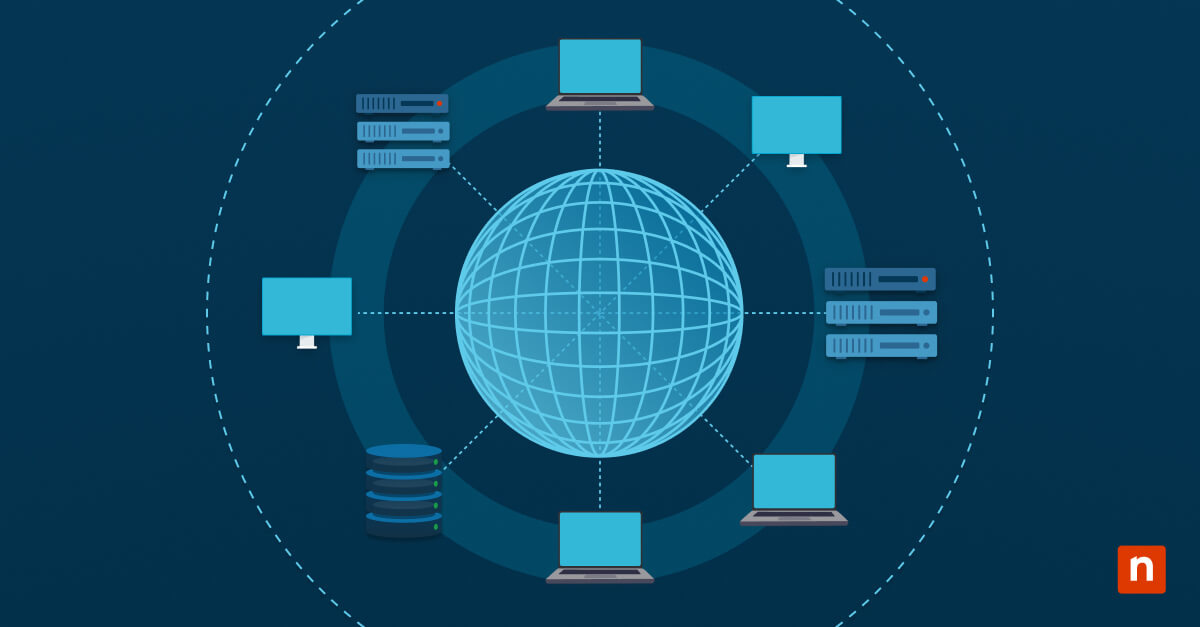IT services have revolutionized the way in which employees and customers interact with your organization. Across design, development, deployment, and retirement, IT Service Delivery is often a silent driver of growth that ensures your IT services stay reliable and responsive to changing demands. Effective IT service delivery minimizes downtime, reduces costs, and defines the customer experience – making it one of the most important processes in your organization.
Why IT service delivery is so important
- Efficiency and Productivity: Streamlining the delivery of IT services can significantly enhance efficiency and productivity within an organization. It allows for quick resolution of issues, minimizing downtime, and ensuring that all system components are running optimally.
- Cost Management: Effective IT Service Delivery can help organizations manage their costs better. By ensuring that resources are utilized efficiently, wastage is minimized. Moreover, proactive maintenance and issue resolution can prevent costly repairs or replacements in the future.
- Risk Management: IT Service Delivery involves implementing security measures and protocols to protect the organization’s data and systems. This helps mitigate risks such as data breaches, cyber-attacks, and system failures.
- Business Continuity: In today’s interconnected world, any downtime can have significant consequences. IT Service Delivery ensures that systems and services are always available, supporting business continuity.
- Customer Satisfaction: Ultimately, effective IT Service Delivery contributes significantly to customer satisfaction. Whether it’s a smooth user experience on the company’s website or efficient customer service through CRM systems, IT services play a crucial role in shaping the customer’s perception of the business.
The key components of IT Service Delivery
A framework is one of the highest-level overviews afforded to your service delivery process. This helps define your service catalog; manage your service desk operations; and gain a clear understanding of all hardware, software, and service performance. Together, this helps to ensure that SLAs are being met.
One of the most internationally-recognized ITSM frameworks is ITIL. Its 7 defining principles help to holistically guide organizations toward tightly-managed service delivery.
1. Focus on value
The primary goal of ITIL is to ensure that IT services contribute to the overall success of the business. This principle reminds practitioners to always consider how their actions impact the organization’s objectives. Whether it’s through optimizing existing processes, introducing new services, or improving customer satisfaction, the focus should be on delivering value that aligns with business goals.
2. Start where you are
Instead of abandoning the IT investments you’ve already made, ITIL encourages organizations to build upon what they already have. This principle promotes a more cost-effective and efficient approach to adopting ITIL, allowing organizations to evolve without unnecessary disruption.
3. Progress iteratively with feedback
Major changes in IT can be risky and expensive. This principle emphasizes a gradual and iterative approach to improvement. By making incremental changes and continuously collecting feedback, organizations can identify and address issues early, ensuring that improvements are effective and aligned with business needs.
4. Collaborate visibility
Effective communication and collaboration are vital for the success of ITIL practices. This principle encourages sharing information, fostering teamwork, and ensuring that everyone involved in IT services, including teams, stakeholders, and partners, has visibility into the processes and activities. This transparency helps in identifying opportunities for improvement and avoiding misunderstandings.
5. Think and work holistically
IT services are complex and interconnected. This principle reminds practitioners to consider the broader context when making decisions or implementing changes. It encourages a systems-thinking approach, where each action is evaluated in terms of its impact on the entire service value system. This holistic perspective helps prioritize risks and opportunities for optimization.
6. Keep it simple
Excessive complexity gets in the way of effectiveness. This principle advises against overengineering processes or using tools and resources that do not align with the organization’s specific needs. It promotes a pragmatic approach, ensuring that ITIL practices are implemented in a way that makes sense for the organization’s size, culture, and objectives.
7. Optimize and automate
Manual and repetitive tasks can be error-prone and time-consuming. This principle encourages the automation of routine processes wherever possible. By leveraging IT automation tools, organizations can reduce the risk of human errors, increase efficiency, and free up resources to focus on more strategic and value-added activities. Optimization goes hand-in-hand with automation, ensuring that processes are continually refined for maximum efficiency and effectiveness.
Go beyond helpdesk software
A formalized framework helps define your service delivery infrastructure: of next importance is identifying key personnel. Some organizations dedicate an IT service delivery manager to overseeing framework and SLA adherence, while others rely on more expansive roles such as IT director. Given that IT Service Delivery also encompasses customer satisfaction and ROI, responsibility can also be shared by the Chief Information Officer. No matter the title, leadership is a vital component to service delivery success.
With the high-level overview sorted, it’s time to dig deeper into the day-to-day areas of service delivery. As the epicenter of service delivery, a helpdesk can illuminate what processes need to change. 91% of organizations claim that their help desk system increases productivity. It provides a central location for all tickets, allowing you to easily oversee and respond to them. From this foundation, it’s possible to gather KPIs such as ticket resolution time – which can help to establish issues. However, while helpdesk software can make an immense difference, it’s equally important to hear direct input from your current IT analysts. Together, these two streams of information build a high-resolution image of bottlenecks within your own service delivery process.
A one-stop solution to efficient IT service delivery
Whether it’s a lack of knowledge management or the demands of switching between disparate solutions, NinjaOne’s ticketing software offers a single point of reference for every ticket. The tool’s complete inventory of IT assets grants you real-time access to health and performance data. This context-aware approach means that tickets are automatically populated with critical information, while endpoint health alerts help to create, route, and escalate tickets.
NinjaOne also supports IT service delivery by giving IT teams full visibility and control over their managed endpoints so they can monitor, manage, patch, and support those endpoints, wherever they are. Ninja helps you deliver services more effectively and efficiently, whether local, remote, or hybrid. Our solution will help you secure environments, provide better end-user support, run a more efficient team, automate processes, all of which help you to provide better IT service delivery.








